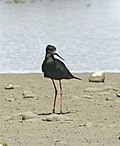Superregnum: Eukaryota
Cladus: Unikonta
Cladus: Opisthokonta
Cladus: Holozoa
Regnum: Animalia
Subregnum: Eumetazoa
Cladus: Bilateria
Cladus: Nephrozoa
Superphylum: Deuterostomia
Phylum: Chordata
Subphylum: Vertebrata
Infraphylum: Gnathostomata
Megaclassis: Osteichthyes
Cladus: Sarcopterygii
Cladus: Rhipidistia
Cladus: Tetrapodomorpha
Cladus: Eotetrapodiformes
Cladus: Elpistostegalia
Superclassis: Tetrapoda
Cladus: Reptiliomorpha
Cladus: Amniota
Classis: Reptilia
Cladus: Eureptilia
Cladus: Romeriida
Subclassis: Diapsida
Cladus: Sauria
Infraclassis: Archosauromorpha
Cladus: Crurotarsi
Divisio: Archosauria
Cladus: Avemetatarsalia
Cladus: Ornithodira
Subtaxon: Dinosauromorpha
Cladus: Dinosauriformes
Cladus: Dracohors
Cladus: Dinosauria
Ordo: Saurischia
Cladus: Eusaurischia
Subordo: Theropoda
Cladus: Neotheropoda
Cladus: Averostra
Cladus: Tetanurae
Cladus: Avetheropoda
Cladus: Coelurosauria
Cladus: Tyrannoraptora
Cladus: Maniraptoromorpha
Cladus: Maniraptoriformes
Cladus: Maniraptora
Cladus: Pennaraptora
Cladus: Paraves
Cladus: Eumaniraptora
Cladus: Avialae
Infraclassis: Aves
Cladus: Euavialae
Cladus: Avebrevicauda
Cladus: Pygostylia
Cladus: Ornithothoraces
Cladus: Ornithuromorpha
Cladus: Carinatae
Parvclassis: Neornithes
Cohors: Neognathae
Cladus: Neoaves
Ordo: Charadriiformes
Subordo: Charadrii
Familia: Recurvirostridae
Genera: Cladorhynchus - Himantopus - Recurvirostra
Name
Recurvirostridae Bonaparte, 1854
Vernacular names
беларуская: Шыладзюбыя
Nordfriisk: Sütjern
Frysk: Klútfûgels
한국어: 장다리물떼새과
македонски: Сабјарки
svenska: Skärfläckor
українська: Шилодзьобкові
The Recurvirostridae are a family of birds in the wader suborder Charadrii. It contains two distinct groups of birds, the avocets (one genus) and the stilts (two genera).
Description
Avocets and stilts range in length from 30 to 46 cm (12 to 18 in) and in weight from 140 to 435 g (4.9 to 15.3 oz); males are usually slightly bigger than females.[1] All possess long, thin legs, necks, and bills. The bills of avocets are curved upwards, and are swept from side to side when the bird is feeding in the brackish or saline wetlands they prefer. The bills of stilts, in contrast, are straight. The front toes are webbed, partially in most stilts, and fully in avocets and the banded stilt, which swim more.[1] The majority of species' plumage has contrasting areas of black and white, with some species having patches of buff or brown on the head or chest.[2] The sexes are similar.[1]
Their vocalizations are usually yelps of one or two syllables.[1]
Distribution and habitat
Avocets and stilts are a cosmopolitan family, being distributed on all the world's continents except Antarctica, and occurring on several oceanic islands. Several species are wide-ranging and a few are locally distributed.
One species, the black stilt of New Zealand, is critically endangered due to habitat loss, introduced predators, and hybridisation with the pied stilt.
Feeding
These species feed on small aquatic animals such as mollusks, brine shrimp and other crustaceans, larval insects, segmented worms, tadpoles, and small fish.
Breeding
Stilts and avocets breed on open ground near water, often in loose colonies. They defend nesting territories vigorously with aggressive displays, and mob intruders and possible predators with a great deal of noise.[1] They are monogamous, although the pair bonds are not maintained from season to season. Their eggs are light-coloured with dark markings, weighing 22 to 44 g (0.78 to 1.55 oz).[1] Three to four are laid in simple nests, and both parents share the incubation duties, which last 22 to 28 days.[1] The banded stilt may breed only every few years, as it breeds on temporary lakes caused by rains in the deserts of Australia. The chicks are downy and precocial, leaving the nest within a day of hatching;[1] they fledge in 28 to 35 days.[1] In all species except the banded stilt, the chicks are cared for by the parents for several months, and they may move them to new areas and defend territories there.[1] Banded stilts deviate from this by collecting their chicks in massive crèches numbering several hundred.
Taxonomy
The taxonomy of the stilts is particularly debated, with the genus Himantopus considered to have two to six species.
| Species in the family Recurvirostridae | |||
|---|---|---|---|
| Common and binomial names | Image | Range | Notes |
| Banded stilt Cladorhynchus leucocephalus |
 |
southern Australia | |
| Black-winged stilt Himantopus himantopus |
.jpg/120px-Black-winged_stilt_(Himantopus_himantopus).jpg) |
Europe, Asia and Africa | Sometimes includes pied (H. leucocephalus), white-backed (H. melanurus) and black-necked stilts (H. mexicanus) as subspecies |
| Pied stilt Himantopus (himantopus) leucocephalus |
_Pied_Stilt_(Himantopus_leucocephalus).JPG/120px-1_(83)_Pied_Stilt_(Himantopus_leucocephalus).JPG) |
Southeast Asia to Australia and New Zealand | |
| White-backed stilt Himantopus (himantopus/mexicanus) melanurus |
 |
South America | |
| Black-necked stilt Himantopus (himantopus) mexicanus |
,_Corte_Madera.jpg/120px-Black-necked_Stilt_(Himantopus_mexicanus),_Corte_Madera.jpg) |
North America to northern South America, and Hawaii | Includes Hawaiian stilt (H. m. knudseni) and sometimes also white-backed stilt (H. melanurus) as subspecies |
| Black stilt Himantopus novaezelandiae |
 |
South Island of New Zealand | |
| American avocet Recurvirostra americana |
 |
North America | |
| Andean avocet Recurvirostra andina |
 |
Andes in South America | |
| Pied avocet Recurvirostra avosetta |
 |
Europe, Asia and Africa | |
| Red-necked avocet Recurvirostra novaehollandiae |
 |
Australia | |
References
Baker, Allan J.; Thomas, Gareth (2003). "Avocets and Stilts". In Perrins, Christopher (ed.). The Firefly Encyclopedia of Birds. Firefly Books. pp. 242–243. ISBN 1-55297-777-3.
Harrison, Colin J.O. (1991). Forshaw, Joseph (ed.). Encyclopaedia of Animals: Birds. London: Merehurst Press. p. 107. ISBN 1-85391-186-0.
Pierce, R.J. (1996) "Family Recurvirostridae (Stilts and Avocets) P.p. 332-348 in del Hoyo, J.; Elliot, A. & Sargatal, J. (editors). (1996). Handbook of the Birds of the World. Volume 3: Hoatzin to Auks. Lynx Edicions. ISBN 84-87334-20-2
Retrieved from "http://en.wikipedia.org/"
All text is available under the terms of the GNU Free Documentation License

